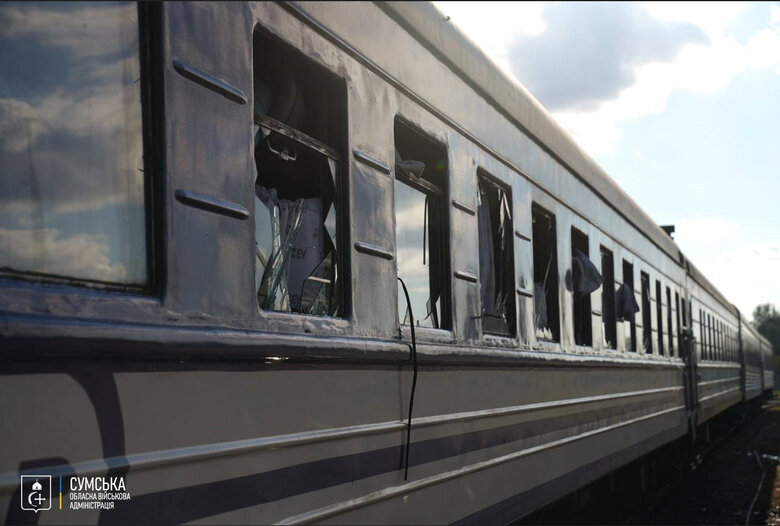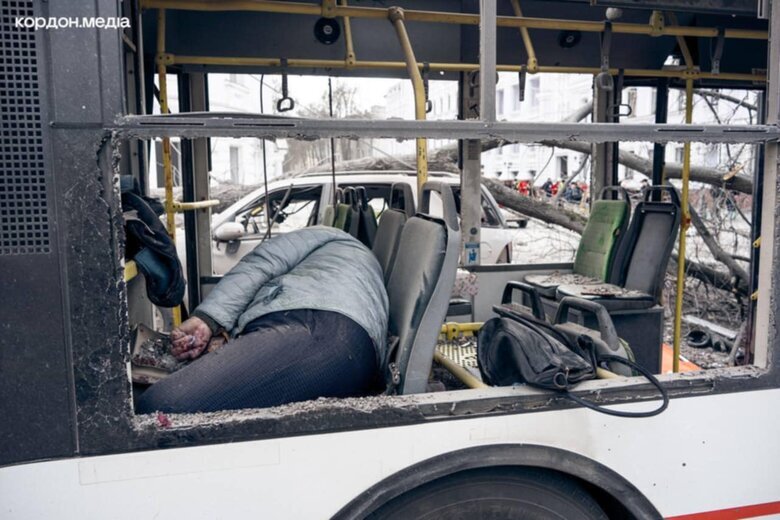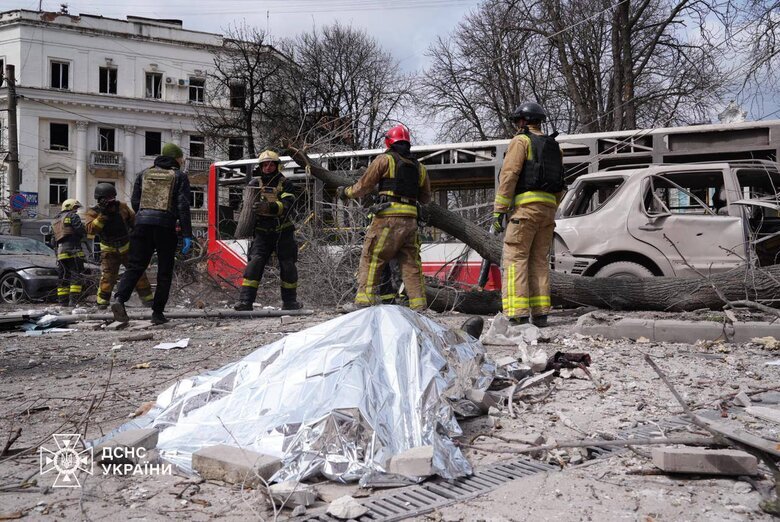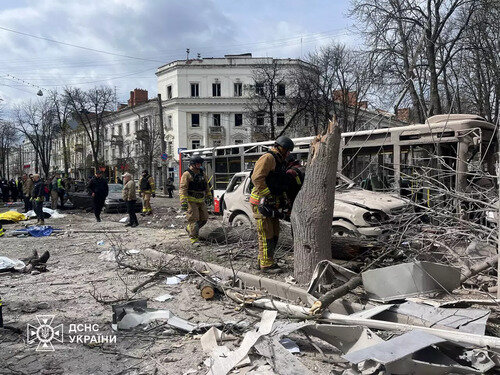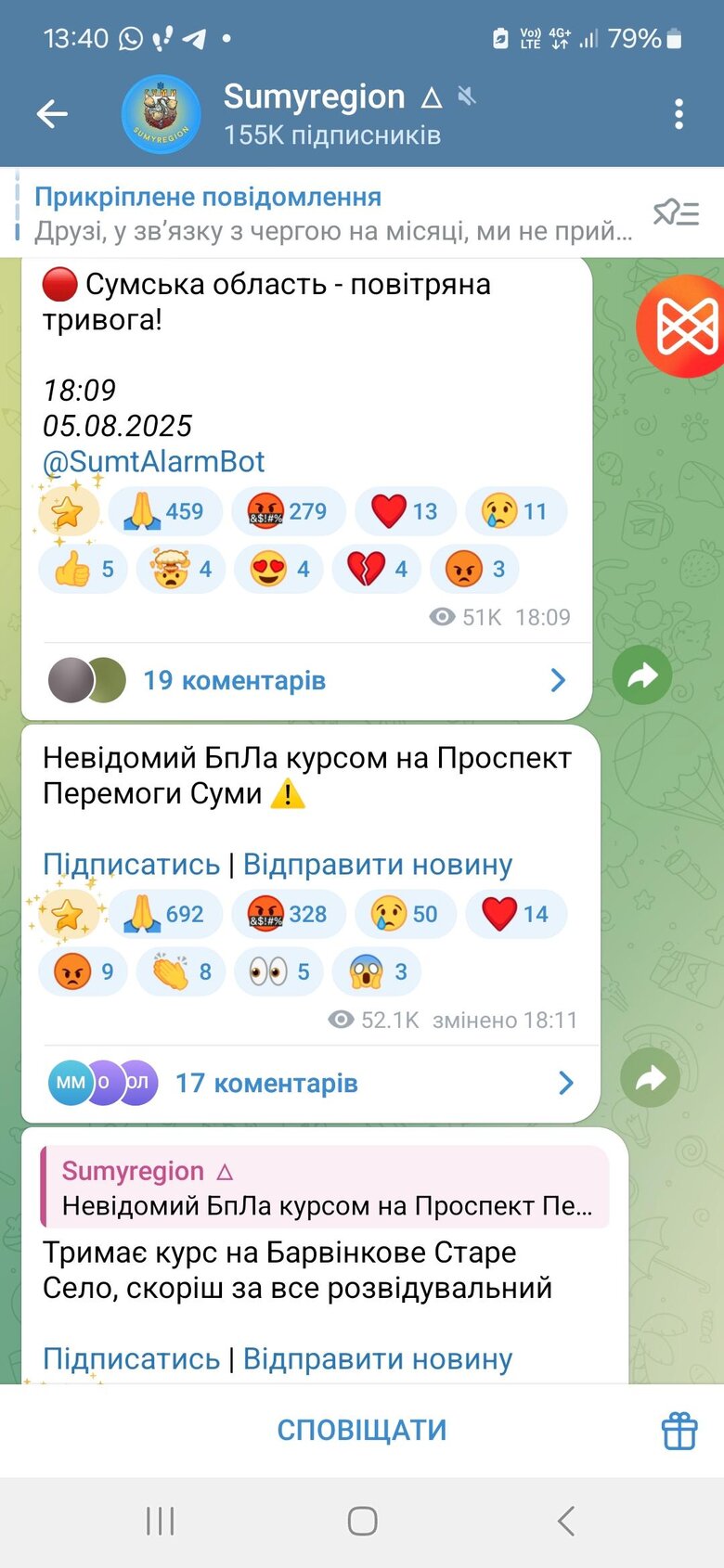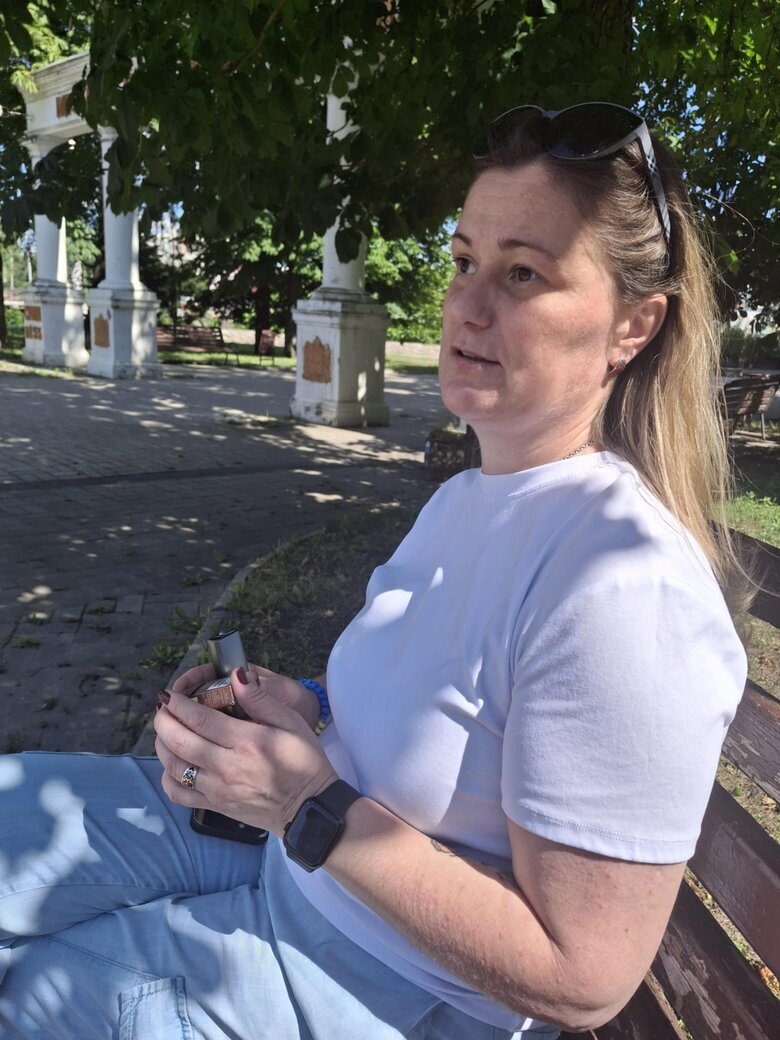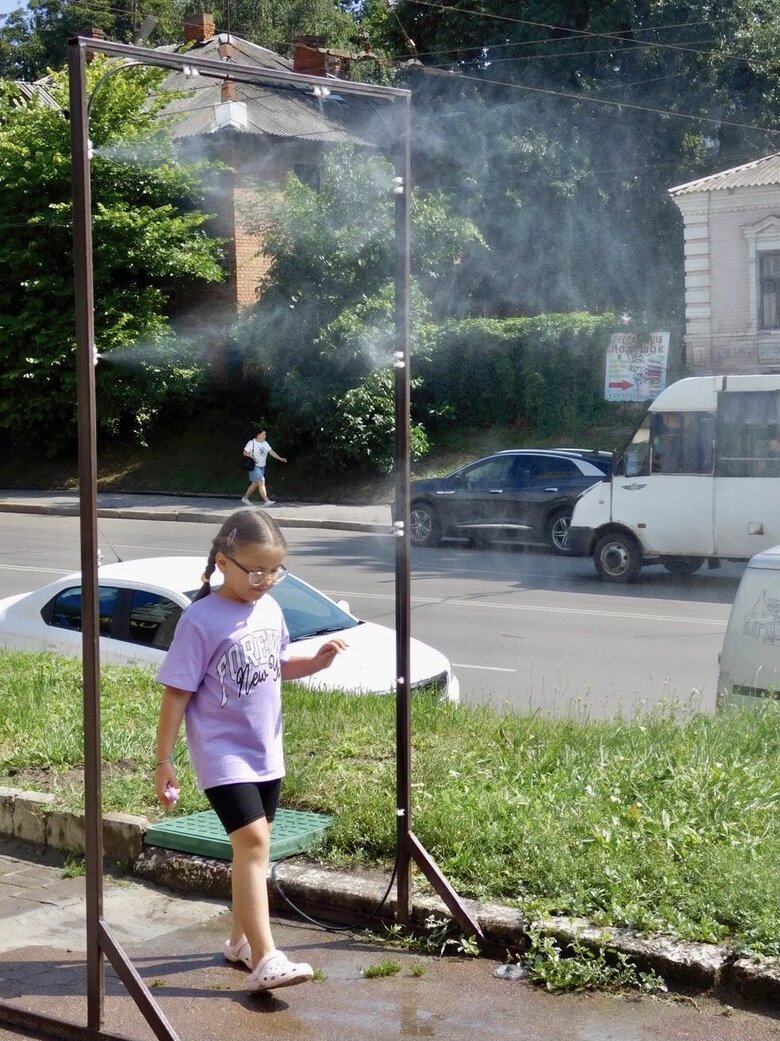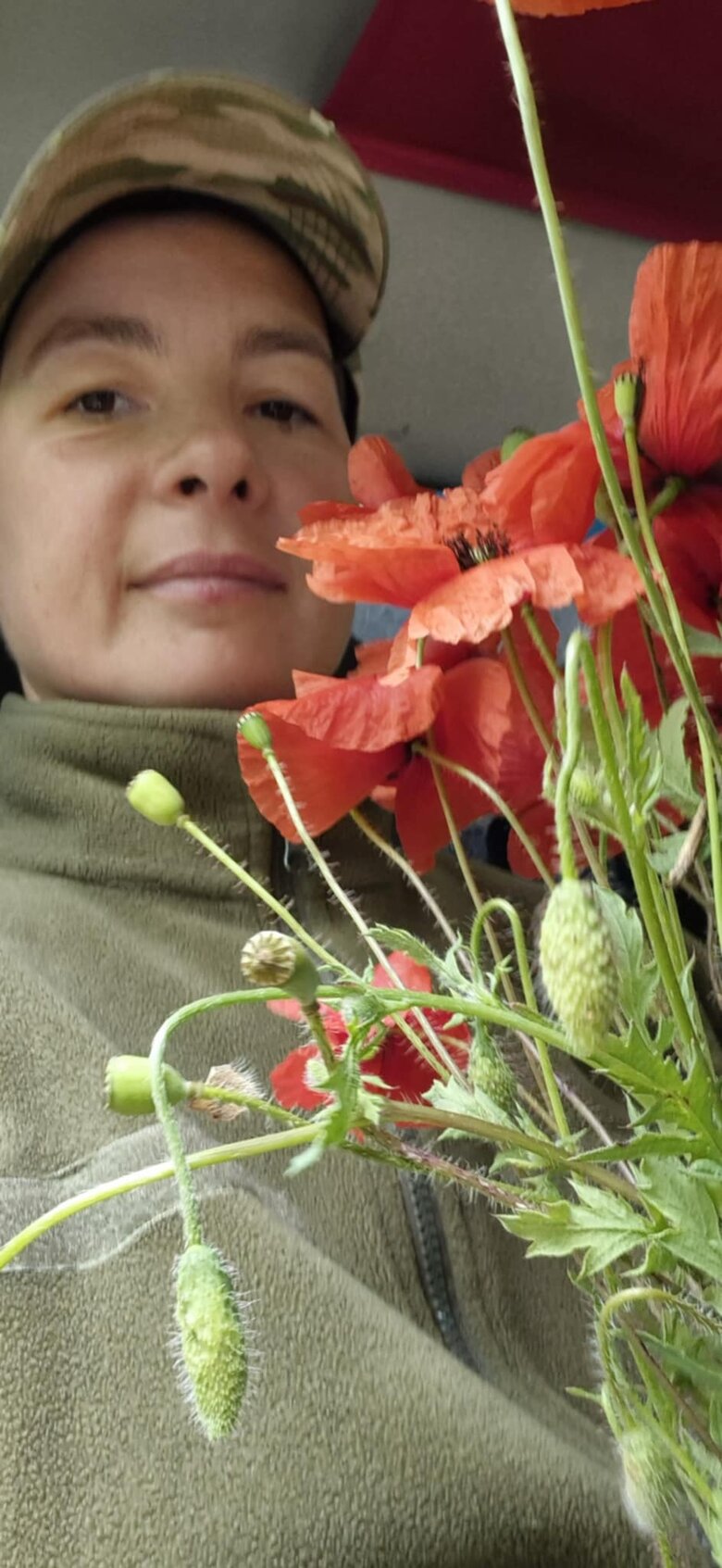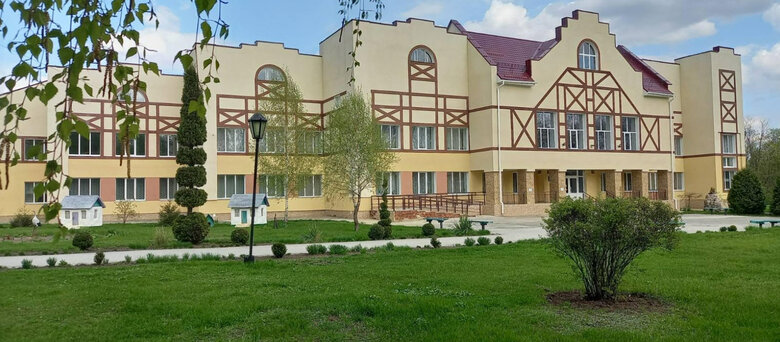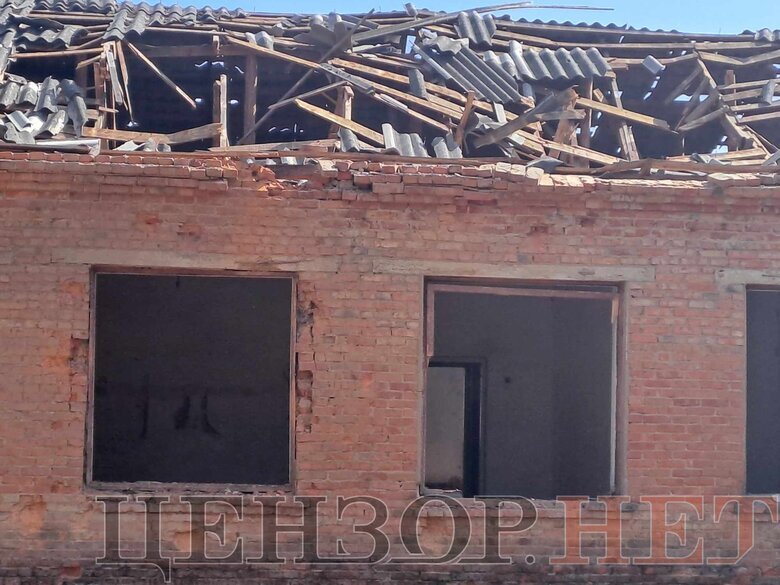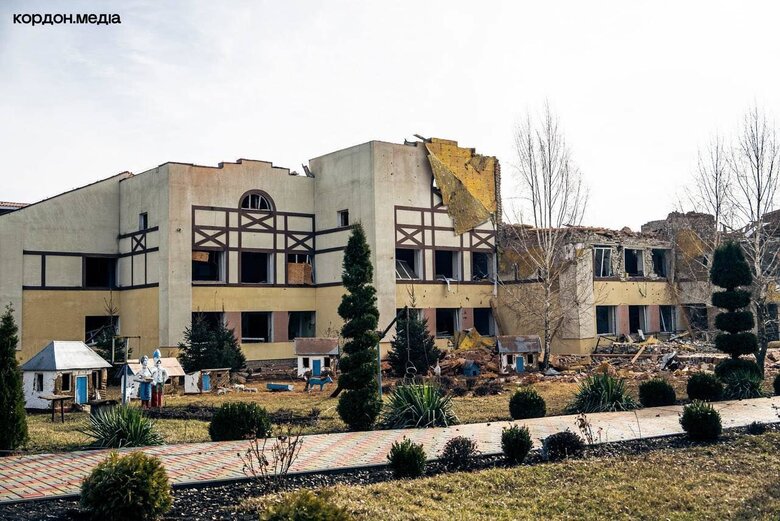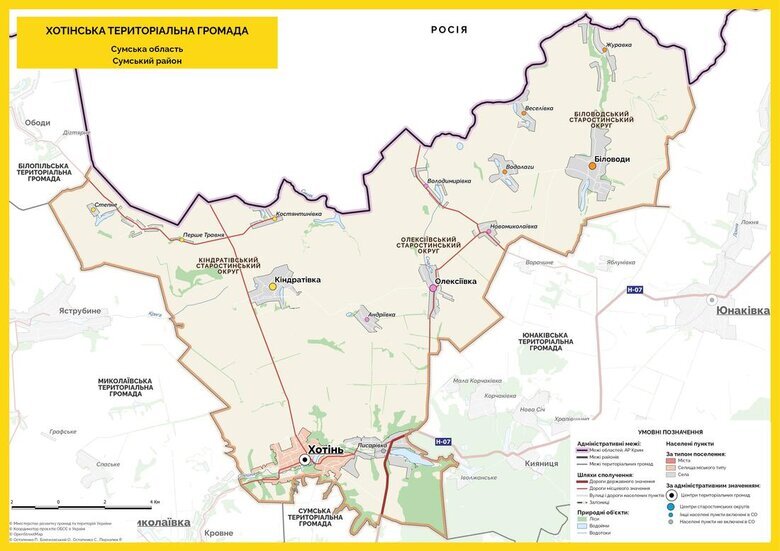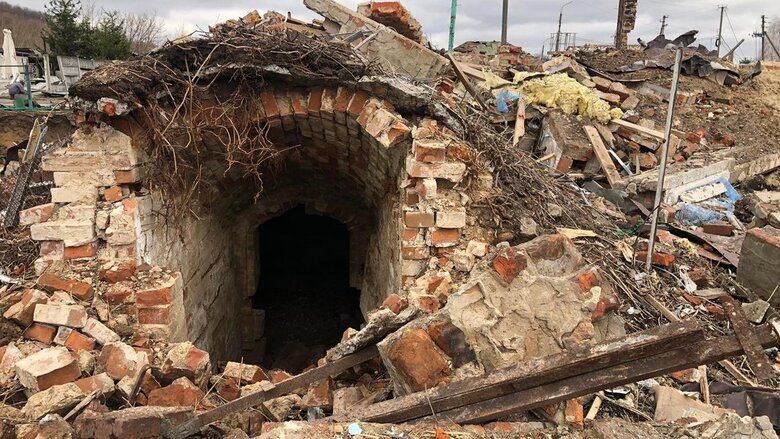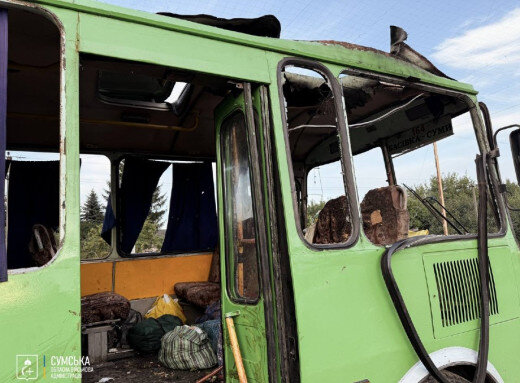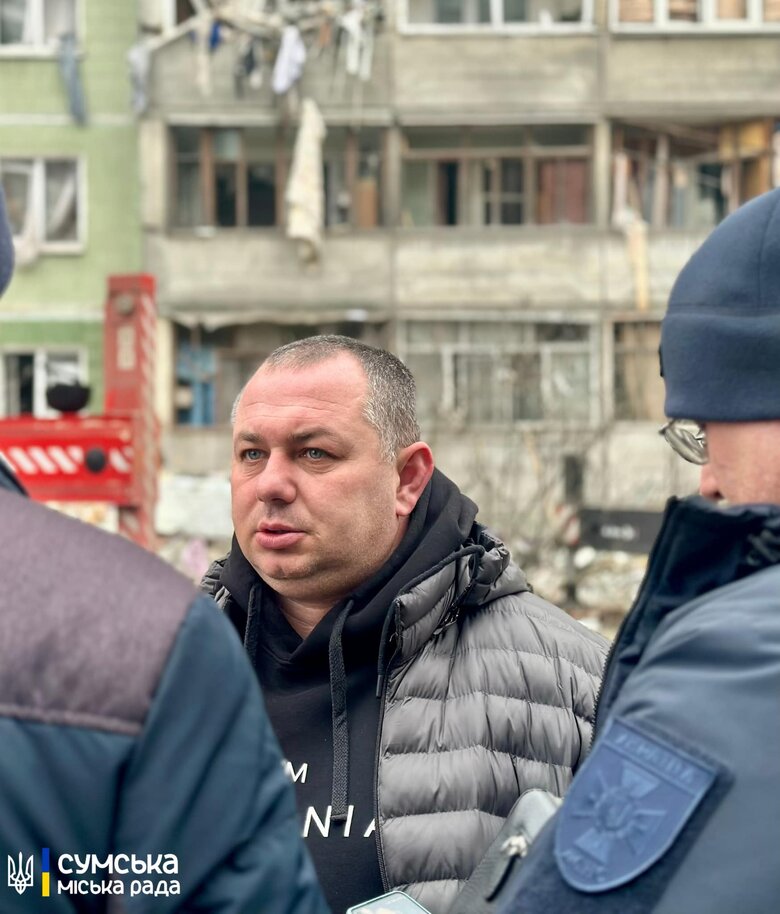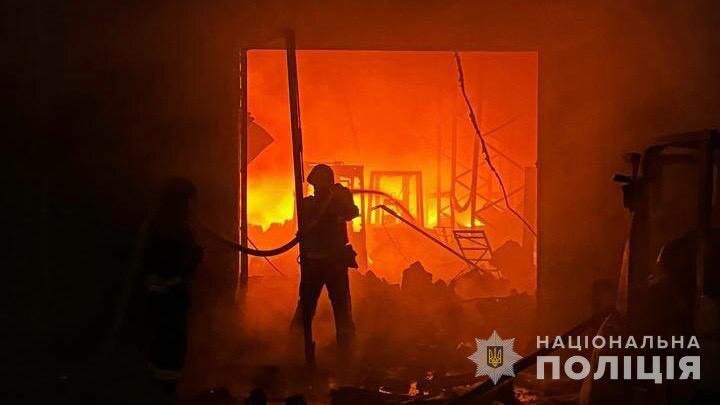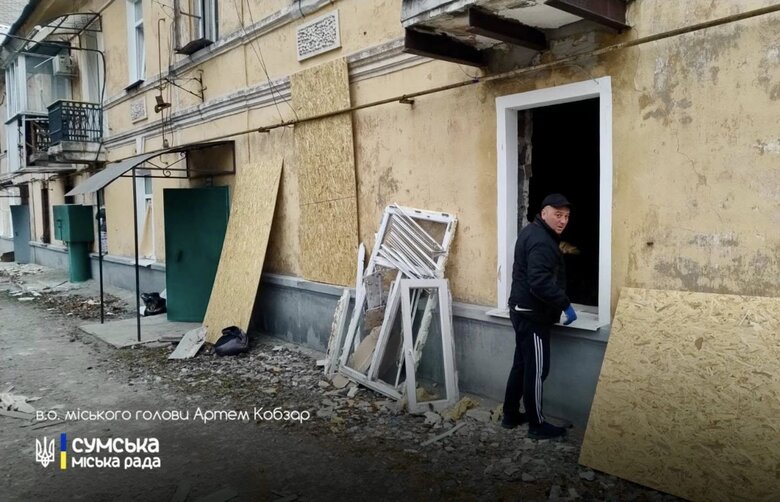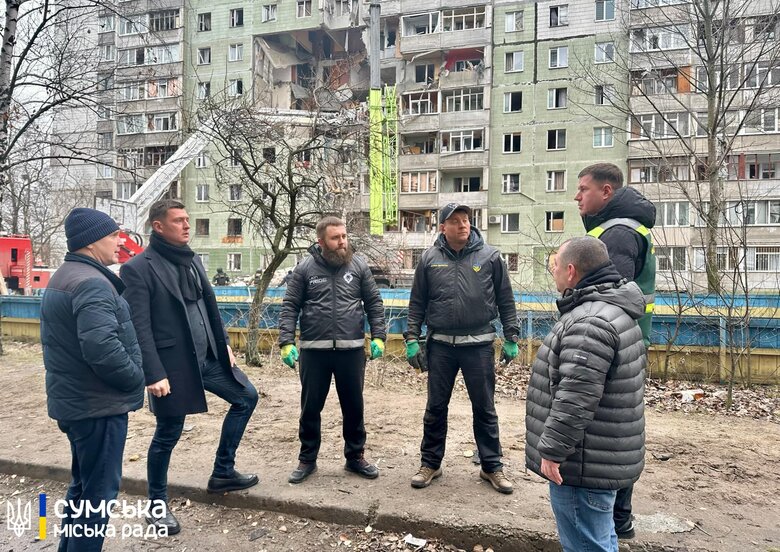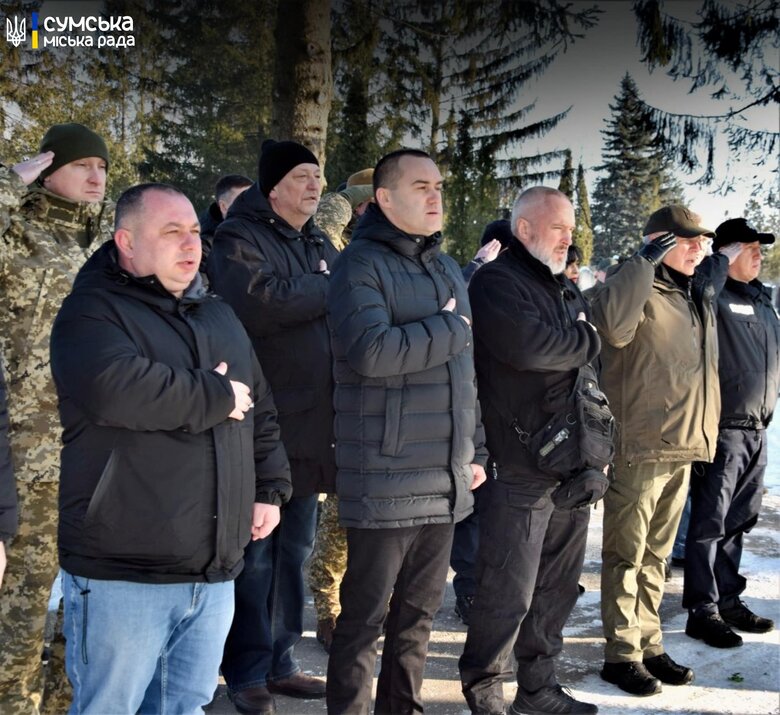Sumy region on fire, Sumy - under attack. Report from region, which has come under particular pressure after Kursk operation
...The evening train Kyiv-Sumy stops on the first platform of the Sumy railway station. Getting out of the carriage, the Censor.NET correspondent thanks the conductor. Then an air raid alarm starts to howl in the air.
- "Here we go again!" says my neighbour in the carriage, a native Sumy resident who has returned to Sumy from a business trip, cheerfully. "This is not the capital, we have more alarms than not. But we've got used to it somehow. Will you take a taxi? My son always picks me up from the station, he is on wheels...
We say goodbye to each other and part ways - each to his car.
...In two weeks, at the same train station, I'll get on a train in the opposite direction. In a few hours, two enemy attack drones will arrive here.
Luckily, the passengers of the Kharkiv-Uzhhorod train will not be harmed, the railway workers will quickly transfer them to other carriages...
THE CITY IS UNDER ATTACK. RECORD HOLDERS - ENERGY HUBS AND "CROOKED HOUSE"
Today's Sumy is not even a frontline city, but in many ways a frontline city. The echoes of explosions from the border are heard all day long (especially at night). It is shelled almost every week with MLRS, rockets or KABs. At the same time, the city is terrorised daily by enemy drones. Their buzzing, which usually ends in explosions, has become a commonplace for Sumy residents.
The regional centre will never forget some of the strikes. For example, as two "Iskanders" hit the city centre on Palm Sunday, 13 April. 35 dead, 127 wounded. It was a complete shock for Sumy.
Sumy residents are informed about the appearance of drones in the suburbs and over the city - both attack and reconnaissance drones - by the TG channels associated with the military. It usually looks like this:
Sometimes you can hear machine guns being fired at the drones (but, judging by the results, not very successfully). Unfortunately, thanks to improved technology in 2025, it is becoming increasingly difficult to hit UAVs with such weapons. Italmas attack drones are particularly troublesome for the city, as they are cheap, low-flying and relatively far away.
It was Italmas that attacked the building of the regional military administration four times over the course of several days. Apparently, at least until the end of the war, this building, which has been called "the Pentagon" in the city since Soviet times and also the "Crooked House", will be empty.
At night, most of the enemy drones fly through the Sumy region in transit, and further across Ukraine. They attack Sumy both at night and during the day, targeting buildings of all kinds, from administrative infrastructure, schools and hospitals to private businesses and ordinary residential buildings. But their main target is the energy structure of Sumy and Sumy region.
"In fact, it is quite difficult to destroy the city's energy system," one of the city's former leaders explains to "Censor", "and here we have to thank the Soviet Union and its urban planning practices. If the Soviet planned economy was bad, the Soviet planned energy sector was on par. The fact is that, according to Soviet standards, the entire energy system of Sumy was repeatedly looped. And in order to "put down" Sumy's energy, several elements must be knocked out at once. Which ones? I will not help the enemy, especially since it is already relentlessly attacking our energy hubs. But so far, Sumy power engineers are real gods! They manage to repair the damaged in a few hours, while simultaneously using backup connections. In addition, they have been very economical in their planning and have bought backup critical equipment...".
The Sumy power engineers are certainly good - but the enemy knows where to strike, because he has similar "soviet" power systems in the notional Kursk and Belgorod. And the Russians have enough intelligence: Russian agents on the ground pass on information, reconnaissance drones verify it, and then monitor the consequences of the strikes.
That's why the Russians are intensively attacking the input substations of Sumy Energy and the CHPP itself, sometimes several times a day. For example, in the last two weeks before the publication of this article, there were as many as 8 such attacks. As a rule, after them, the power goes out in the city, but in a few hours the power supply is restored.
Power engineers say that if the enemy sets out to "put down" Sumy's energy sector, they will do it. But not forever. The worst case scenario is 3-4 days of "blackouts".
So, with high probability, autumn and winter will become a battlefield between Russian military destroyers and Sumy power engineers. But the latter should feel defenceless, because there are big problems with the protection of energy hubs in the city. And with the protection of the power engineers themselves. So are the current authorities - central, regional, and city - really doing everything to protect Sumy's energy sector? At the moment, the question is rather rhetorical.
"WHY DON'T SUMY RESIDENTS GO TO SHELTERS? MAYBE IT'S NOT TOO LATE YET"
How do Sumy residents react to this avalanche of shelling? Differently, of course, because each person builds their own reactions and patterns of behaviour. And everyone has different life circumstances.
Hennadii and Olena Sverdlenko live on the top floor of a 5-storey building. It's a vulnerable spot, especially given how low enemy drones are flying these days.
"Usually, if we are awake, we go to the corridor," says Olena. - "Since we have seven cats, it's hard for us to go downstairs. Every time there is a raid, we tense up because we know it may hit us. Are there any bomb shelters near us? Yes, there are, but it takes about 7 minutes to get to them. And with so many animals, how do you get to that shelter?"
In general, Sumy residents seem to be used to the shelling and, along with heightened anxiety, sometimes demonstrate elements of indifference. (Or is it mental fatigue?). There are plenty of people on the streets, and catering establishments are not empty either. A video of a Russian "Shahed" attack drone flying over the heads of the newlyweds and guests during a wedding ceremony in Sumy has gone viral on social media, while the participants of the ceremony ignore the possible threats and continue to do their thing.
Instead, the shelters are empty...
"Yes, of course, this is everyone's business," Maryna Bilinska, an anaesthetist at the Central City Hospital, tells "Censor". "But children, small children, are all here. No one is taking anyone out, no one is leaving. Everyone is playing. As soon as I left my house to visit you, a bomb landed 100 metres from my house. When I calmed down, I looked out of the balcony and saw children riding bicycles and scooters...".
An anaesthetist and veteran of this war, Maryna Bilinska, believes that "we went a little crazy. It should be like this: if something is flying, we should go to the shelter. But we are not running for cover. We run to the balcony...".
"Some things really need to be done by force," Maryna is sure. - "When there is an alarm, yes, you have to go down to the shelter by force.
Why don't Sumy residents go to the shelter? Mykhailo, 61, has his own view on this problem: "It seems to me that the situation in Sumy hasn't really hit the residents yet. Apparently, 2-4 drone arrivals a day is not the level of danger that will make people stay at home or in a shelter. In addition, there are too many air raid alerts in Sumy, and you can't run to the shelter every time. And people are known to get used to everything, including sirens. In addition, many people rely on the "lottery" principle: if it do strike, it will strike someone else, not me..."
In addition, Sumy residents have a sense of dignity and do not allow enemy drones to spoil their mood and prevent them from walking.
A "Censor.NET" correspondent witnessed an interesting scene. Walking in the morning along the central Soborna Street, which Sumy residents simply call Sotnia, he heard the sound of an explosion. After recovering from the surprise, he noticed the reaction of people nearby. After stopping for a moment and looking around, they continued walking at the same pace.
Five minutes later, I was standing at the trolleybus stop near the Central Department Store.
- "Excuse me, do you know where they write about where they hit?" an elderly woman standing next to me asked.
- "If they do, it won't be now, because it has just exploded. Maybe they will write "An explosion was heard in Sumy".
The woman didn't seem to like my answer. She took out her mobile phone and dialled a number:
- "Nina, hello. Didn't it explode near you? Well, I heard it! You were scared, weren't you? Do you know where it hit? You have no one to ask?
THE CITY AND THE MILITARY: IT CAN BE DIFFERENT, BUT IN GENERAL, THERE IS CALM AND RESPECT
Perhaps another reason for the relative calmness of Sumy residents is the military, of which there are many in the city. It's just that they have recently changed their pixelated and cartoonish uniforms to civilian clothes. The reason is clear: there are too many enemy drones flying over the city streets...
However, their difference from the locals is still striking. When you see a lot of guys walking calmly down the street... you don't need a pixel to recognise them as military. Because civilians don't walk like that.
"In the beginning, some of our ladies were scared of the number of people in the pixel," a native Sumy resident smiles in a conversation with "Censor", "but after the Kursk operation, which (or rather, its consequences) is mostly negatively perceived by Sumy residents, there was a noticeable change in attitude towards the military; their presence gives people peace of mind and confidence that the city will not be left to its fate."
Even if (frontline) Sumy sometimes feels unusually calm, the main merit of this is the military, who keep the enemy at bay. Photo: FB user Erika Viktorivna
One example of how the military has changed Sumy is the city's roads. More precisely, the cars that drive on these roads.
"When the enemy was pushed back from Sumy, there were few cars," says Hennadii, "but later the number of cars increased dramatically. Not even by 2-3 times, but by an order of magnitude, 10 times. On Bilopolske Highway, in the car parks of the former traffic police, there are not enough places for cars to register. What is the reason for this? Here's an example: my "Passat" with 17 years of experience was bought last year, after six months of combat, by a military man, a young man who is fighting on the "zero".
There are a lot of military cars here. Both of those who serve in Sumy and of Sumy residents who serve elsewhere. It is easy to distinguish a military vehicle from a civilian one because, for obvious reasons, the military has developed a specific driving style. It's not a claim, it's a calm statement of fact. That's why people write on social media: 'Guys, let's make room for them, because if an accident happens, it will be more expensive for us'".
The situation with cars, although a little scary, is quite satisfactory. And what about housing? There are plenty of problems here. Sumy is not made of rubber, and many IDPs also need to live somewhere; and people are different.
"I wanted to accommodate the military," says a 67-year-old Sumy resident who owns an apartment in a residential area, "and I did. But I had to fight with my neighbours, because they said: what if those reconnaissance drones track the military and they strike us? I told them this: "We all walk under God; if it arrives, it's our fate. We owe it to the military." My neighbours didn't talk to me at first, but then somehow they got used to the guys, and now they even bring them something from the garden."
And here's how the UAV crew commander, call sign Bond, looks at the housing problem in Sumy and the suburbs: "There are really a lot of military personnel, and there is often no housing for them. And there are different types of military: some live neatly, while others need to have their houses burned down with napalm. That's why people are often afraid to rent their houses to the military. You won't be able to make any complaints to them later, and they will tear your house apart... Besides, the military is interested not so much in apartments as in private houses. And the private sector is a disaster, everything is occupied. And there is the fact that the military are charged more than civilians would be. Well, because the military earns money. And this, to be honest, is somewhat disturbing. On the one hand, I understand from a purely mercantile point of view that a person lives in a frontline city, and today they have this apartment, and tomorrow there is an arrival and it will no longer be there. And you have to live from something... But on the other hand, boys and girls, we are protecting you. And to take money from those who protect you is, well, not a good policy. Because we all have families, too; we have places to send money to. And then, if something happens to us, we will need that money to recover."
Call sign Bond
Another soldier, an experienced medevac driver with the call sign Riko, praises the attitude of the people and local authorities: "In general, you can feel the help of the local authorities. There is always accommodation; when you are on duty, there is always a house for you to live in. A typical situation is that grandmothers have moved out to live with their children and left the house to us, saying: 'Just feed the chickens!' So the attitude is good."
Call sign Riko
The military also like the fact that many businesses in Sumy give them discounts. It's also a really relaxing place to have dinner. They say that when you arrive in the city late and you're hungry, but you don't have the energy to cook, you look for a place to eat. And in Sumy, many establishments are open until 9 or 10 p.m. Unlike many other frontline cities, where 90% of establishments close at 5 or 6 p.m.
In general, despite being historically close to Russia, the military like the city. "Maybe some of the 'waiters' are encrypted and I don't notice them, but in general I have very positive impressions of Sumy," says Bond. "Although I haven't talked to many locals because we are busy with work. But our neighbour in the house, a guy with a beautiful Ukrainian name Nazar, speaks Ukrainian, and his father and grandfather are military men... I went to get my hair cut, and the woman who cut it was very friendly... I went to the theatre (Shchepkin Drama Theatre - Y.K.) for two performances, and after each performance they thank "our guys and girls from the Armed Forces who protect us." Then there was applause and a collection to help the Armed Forces... We also went to the park, and a band played there, singing Ukrainian songs...".
If (frontline) Sumy sometimes feels unusually calm, the main merit of this is the military, who keep the enemy at bay. After all, literally 10 km from the city, life and death walk side by side.
KHOTIN AND YUNAKIVKA: THE KEY BARRIERS TO THE ENEMY'S PATH TO SUMY
When Volodymyr Bakai, the commander of the VFTC (Volunteer Formation of the Territorial Community) of the Khotin community, took a Censor.NET correspondent around the villages of Khotin district in April 2024, the pride of the locals, the Khotin Lyceum of the Khotin Village Council, had suffered minor damage. Although the enemy was actively attacking technical buildings on both sides.
But the March attack by Russian "Pushkinists" on the lyceum with an "Iskander-M" missile turned the elegant building into another scary scarecrow of war.
Photo: "Kordon Media".
The fate of this school largely reflects what the Khotin community is going through. This name is on the lips of the whole country, because the future of Sumy largely depends on its fate, as well as on the fate of the Yunakivska Hromada. Even Volodymyr Zelenskyy reports on the liberation of the border village of Kindrativka...
Volodymyr Bakai (no longer the commander of the hromada's VFTC, but he is closely monitoring the way his native Khotin district is resisting the enemy) tells us about the situation:
"The situation on the border of Sumy region has really changed since the beginning of the Kursk operation. We began to be shelled along the entire perimeter of the border. If you look at the map, the Khotin community has 14 villages, 12 of which are almost on the border itself. A little deeper, about 8 km from Kindrativka, is Khotin itself. Plus, just across the dam, Pysarivka.
When we went to the border in April 2024, our border guards and observation posts were still there. Now all the villages of the Khotin community are destroyed, the population has left them. There were many cases when old people, pensioners, did not want to leave their homes. Many of them can be understood: with their pensions, leaving, renting an apartment in Sumy or outside the city is a huge problem for them.
Volodymyr Bakai: a sad tour of Khotin destroyed by the enemy
What I show in this video happened in a month. Khotin, like many of our villages, is located by the river. And this village has such a ledge: first, there is a mountain from above, then the Oleshnia River, and then the mountain again, which turns towards Sumy. So the enemy smashed the nearest points of this mountain. Why? Because if they enter Khotin, God forbid, they will have direct artillery fire on Sumy. Not to mention MLRS and rocket launchers. Plus, there KABs that are already flying over Khotin, and then they will be flying over Sumy. From there, the regional centre is 20 kilometres away. In general, Khotin and Yunakivka are important strategic points for the defence of Sumy. They are also located at a high altitude, so it will be convenient to shell the city from them. That's why they are hitting these points; in Khotin, they bombed house after house. They do this deliberately, because they understand that we can hit their territory from these towers.
...When the Russians entered Kindrativka, they did not expect who would come with the words: "Glory to Russia". They fired at any sound. And now Kindrativka has been smashed to pieces. Sometimes people from our community use drones to watch videos to see what's happening in the village, where each house is. One guy from Kindrativka told me: "This is my house, only the cellar is left."
It's a typical story about the extent to which drones are running things. There is no water, gas or electricity in Khotin. So two locals went to collect water. And one of them was wearing military trousers. And the fpv saw the two of them, the men were cut down, and while the car was being pulled up, they were bleeding to death...
Khotin on 14 March 2025. Photo: Suspilne Sumy
Here's another situation: a person from Khotin has long since left, living in Sumy or near Sumy. And now they came to Khotin to their yard to dig up onions and potatoes. They were spotted, they saw drones flying overhead, so they turned around and left. And in the evening, their house was covered...
The majority of the community's border villages have already been captured by the enemy. About 80 per cent of the community's territory is under its control. Khotin and Pysarivka remain ours."
"WHITE ANGELS: TO HELL AND BACK. A REPORT FROM THE EVACUATION DRIVE
Here is another perspective on the war-torn Sumy region. The village of Bytytsia, in the starosta district of the Sumy hromada, is located right in the middle between Sumy and the Ukrainian-Russian border. It is about 20 kilometres in both directions. At the beginning of the war, the enemy dropped two bombs here. When the Russians were pushed back across the border, life in the village began to recover - until the current enemy offensive. Now Bytytsia is being destroyed day and night. Only the most stubborn villagers remain there.
Photo: Bohdan Kalinichenko, Suspilne Sumy
It is there, in Bytytsia, that a "Censor.NET" correspondent is going with the evacuation group of the "White Angel", a special unit of the National Police that evacuates people from frontline settlements in Ukraine. This time, the "Angels" will be taking 60-year-old Vadym Ivanovych. His house recently came under fire, and the owner himself was concussed. The man needs treatment and constant care. Both will be provided to him - at least for some time - at the Sumy Transit Centre for IDPs.
Early in the morning we leave Sumy in two armoured evacuation vans. You realise from the conversations during the smoke break that life with the "Angels" is not at all angelic:
- ...We took old woman, before we could leave - arrival! We jump out and there's no bridge!
- ...When you get home, your wife is squeezing your T-shirt with sweat. I lost 8 kilos in a short time. No need for any fitness.
- ...What, again? No, I said, I'm not going this way again (laughter - Y.K.)...
At first, Sumy "Angels" trained in Donetsk region. Pokrovsk, Kurakhove, Myrnohrad, Kostiantynivka... From there, they returned home as experienced evacuators and have been rescuing people in Sumy region since September last year.
Most of the policemen in the group are big, bearded men. Against their background, Olena Stavytska from Okhtyrka, the only female police officer in the unit, looks like a real flower. But this flower is not only beautiful, but also hardy. Olena, like the rest of the unit, has made several hundred evacuation trips under fire and under constant stress.
During one of these shellings, in October last year, a disaster happened.
- "It was a trip to Pavlivka village in Bilopilska community," she says, "There was a drop. She was slightly injured and was hospitalised...
After the hospital, she returned to the unit.
- And your relatives don't tell you: "Olena, you're a little girl, why do you go under fire and shelling?"?
Olena laughs.
- "Now it's okay," she says. "But at first, when I was going to Donetsk, I didn't say I was going there. I said I was going on a business trip to Sumy. I told them about Donetsk when I returned...
...Everyone is getting into the vans wearing armour and helmets. Looking at the spartan atmosphere - only an orange stretcher and a spare - the "Censor" correspondent thinks to himself that after the war this van can be donated to a museum. So many people were saved here...
According to the group's policeman Serhii Tarasenko, not only people, but also various animals; their owners flatly refused to leave their homes without them.
- "They took goats, dogs, cats. Our record is 12 dogs taken in one trip in this car!
- And did the dogs bark?
- No, we took them out in such extreme conditions that they sat quietly...
Another time, we transported six goats. Poultry was transported. And the cats had to be put in bags to prevent them from running away.
- How often does the group have to work under fire?
- It depends on what you consider shelling. For example, if you arrive in a village and five KABs arrive there, is it shelling or not? And we work in such conditions almost every time we go out. We have KABs, artillery, GRADs, FPVs - a full range of weapons. And we felt it on our own skin.
Tarasenko's call sign is Charon, which in Greek mythology is the carrier of the dead to the realm of Hades.
- Why did you choose this call sign? "I figured we were fellow transporters," the policeman laughs.
If they are colleagues, they work as carriers in different directions. For Tarasenko and his colleagues are more likely to bring people back from the half-dead realm to life. At the same time, like all rescuers in this war, he risks his life: the enemy has a favourite insidious practice - to hit the place of the previous hit again when rescuers, firefighters, police arrive there...
Serhii holds a frequency analyzer in front of him, a device that allows him to intercept video signals from drones. What the operator of the enemy drone sees, the "angels" see. If the drone approaches the evacuators, they take appropriate action.
Already on the way to Bytytsia, Tarasenko, peering at the screen of the analyser, reports to his colleagues:
- "Something is flying, frequency 986, signal strength 21.
A minute or two passes, and Tarasenko adds:
- "It's gone. The signal has disappeared.
Meanwhile, we are already driving through the streets of Bytytsia. Looking out of the window, you feel a mixture of aching pain and cold hatred. The pain is from the realisation of the suffering of the war-torn village. The hatred is for the Russian sadists who kill such picturesque villages with a long history every minute. According to historians, Bytytsia was founded around 1710...
Here comes Vadym Ivanovych's house. The owner is sitting next to us, his arms and head shaking a little: the consequences of a shell shock. He recalls:
- "How was I concussed?? "I was lying on the bed - and first it hit there, then there, and when I got up...
A neighbour man and a neighbour woman came to see him off.
- "Over there, look, three KABs arrived," the neighbour points out, "Those houses all burned down, but he stayed - it didn't burn down.
- "Here, almost everyone who didn't get hit left," neighbour Valentyna tells "Censor", "The owner of that house was killed.
- Can you already distinguish where and what arrives?
- Yes, we can tell when it's KABs and when it's artillery. (There's something behind us - Y.K.) Oh, and these are ours!
- Is there any shop working here?
- There is, over there... Look," she turns to Vadym Ivanovych, "the wallet is here, it has a passport and a code.
Vadym Ivanovych closes the mutilated house. It is noticeable that he is uncomfortable. Who knows when he will have to come back here. And if he will have to come back at all?
- "Vadym, look there," the neighbour says, a little too cheerfully, "when everything is fine, ask someone for a phone and call.
Already in the bus, I see that Vadym Ivanovych has only one green bag.
- "What do you have there?" I ask.
- "Trousers, shirts, lapti. A cup, a razor. It's like going to the hospital...
I want to support him somehow, but the only thing that comes to mind is to pat Vadym Ivanovych on the shoulder.
...Let's get back to Sumy. Today everything went smoothly - of course, by the standards of other outings of the "Angels". Especially the penultimate one - when three women aged 66, 74 and 78 died in the Yunakivska community as a result of a UAV dropping a bomb on a civilian bus. Another 19 people were injured.
"White Angels" evacuated both the dead and the living that day.
- Injuries of varying severity - Serhii Tarasenko says - We had to act quickly, because while we were standing there, up to a dozen enemy fpvs flew overhead.
- How does the psyche react to such things? To death and suffering of people, to constant danger? And even after many hundreds of outings?
- Well, this profession leaves its mark. Unfortunately. But this is our job, and we do it. Because we have to take both the living and the dead to a safe place...
"NOW SEVERAL SCHOOLS ARE BUILDING REAL SHELTERS WHERE CHILDREN CAN STUDY"
But let's get back to Sumy. We meet with the acting mayor in the evening, Artem Kobzar is taking a "Censor" correspondent in his car to have coffee. The day before, there had been several hostile attacks on the huge building on Independence Square, where the acting mayor himself worked, so I asked him about it right away:
- Now, as I understand it, further work there will be impossible, and employees will have to look for places to work in other locations. How have you found your offices after these attacks?
- Due to the constant hostile attacks on the administrative building, we were forced to leave it and move to safe places. It became impossible to work there, and saving lives in such circumstances is the most important thing.
However, we believe that after our victory, we will rebuild every wall, open the doors and work for the community as usual, in our places, even stronger and more united than ever!
- For many months now, Sumy has been living in a mode of constant monitoring of telegram channels that inform residents of the region about attacks by Russian attack drones, missile strikes, explosions of KABs, and barricading of enemy reconnaissance drones. At the same time, there is an understanding that in autumn, not to mention winter, the situation may deteriorate significantly - simply because this pressure on the city is part of the enemy's plans. Hence the question: what is the situation with shelters in the city?
- You know, I am very grateful to these telegram channels. They write: over this place, go to a shelter, something else. I think they do an incredible job of providing people with information so that they can save themselves.
Now about the shelters: In 2022, we started building the simplest shelters. In schools, kindergartens, and invincibility points. There are generators and drinking water there. People will be able to come and charge their phones.
At the same time, real shelters are being built in several schools where children will be able to study. Unfortunately, we do not know when the war will end and how much they will be needed. But the reality is that children must be safe first and foremost. And for this purpose, the city and state budgets are doing everything necessary. I told you that negotiations are underway. We already have one radiation shelter under construction by our donors and partners from abroad. They will also build another one. And my personal position as the acting mayor, when I communicate with those people who are ready to provide funds, is: okay, take the funds, hold a tender on your own, determine the winner, and build it. We will provide everything that depends on the authorities - to allocate land, supply water and electricity.
- And these will not be simple shelters, but entire complexes?
- Yes, because there are requirements from the State Emergency Service: the appropriate concrete grade and reinforcement spacing, as well as how much earth or clay should be on top to ensure that the shelter can withstand a missile strike. But personally, my wish is to find donors who can build a large radiation shelter where children in our city can not only stay safe, but also watch some films and use the Internet. So that the child feels that nothing threatens him or her here. When children go to Lviv, to Chernivtsi, they feel that they are safe. There are no air raids all day long; there are no buzzing shaheds.
- But they still have to get to the shelter. And how do you do that when an explosion occurs immediately after the alarm, and often before?
- We asked the military the same question. They say that, unfortunately, they sometimes do not have any detection of enemy munitions. So it's not that someone overslept and didn't press the button. Just as we are trying to stop them, so they are trying to inflict maximum damage on us.
- How do you motivate Sumy residents to go to the shelters? It seems that people still do not understand the danger.
- You know, I remember in 2022 when an explosion occurred in Sumy somewhere far away - everyone immediately ran to the shelters. And then I came to Toretsk and was surprised. Something was constantly exploding nearby. And the military were standing there, just our Sumy unit. I asked a Sumy guy: how come children are riding bicycles while something is exploding nearby? - They are used to it.
And I'll give you the same answer: now, perhaps, they are used to it. Every family sitting at home hopes that it's not flying towards their house. Similarly, when people are walking around the city, they are sure that it is not flying towards them, that they will not be hit.
- How many people have left the city over the past six months and how many have arrived?
- We have 34,800 internally displaced people from the border area. These are the people who came to the city and are now receiving funds as IDPs. At the same time, we understand that today it is very difficult to rent an apartment. If someone has left, someone has moved in. But there are no statistics, because there is no record of a person crossing the Sumy checkpoint, checking in and out. One thing is clear: there are many more cars compared to last year.
- And this is despite the fact that Sumy is now a frontline city.
- I'll tell you more. My grandmother is 82 years old, she is from Vorozhba, Bilopillia district. My mother took her for a week, and they lived in Sumy for a week. My grandmother said: I have onions, potatoes, garlic there, I need to go there! And now they have been there for 2-3 weeks. My mother called me today. She asked: "Mum, when?" "Who knows? There's so much work... - But it flies there!
What can I say - these are our people. In general, I believe that in Sumy and Kharkiv, ordinary people living in these conditions are simply heroes. My wife, when something flies at Sumy, she takes her daughter and stands between two walls. And this can go on all night. But in the morning she gets up and goes to work. On Medical Worker's Day, I congratulated doctors. I told them: you know, I have no idea how you work. If a day, or two, or three, it flies, and you get up in the morning to work, help the military, treat the residents of our city.
And the whole city lives in such conditions. They also pay taxes, some donate to the Armed Forces, help, weave nets. People are doing everything in their power to keep the city alive.
- At the same time, people need to understand that the situation may deteriorate significantly in autumn and winter.
- We need to prepare for the worst and hope for the best. You know, I'm very grateful to our civil society organisations. I have been in office for about a year and a half; before that, there was another mayor. Under his watch, emergency response was completely different. Nowadays, the humanitarian mission "Proliska" and the Red Cross bring help. Charitable organisations and NGOs are coming. They are engaged in liquidation: they cut plywood and put it in the windows.
I personally attended the last arrival of the KABs. A woman came up to these guys and asked: "How much do I owe you?" "We do it for free. We are Sumy residents.
These are either discharged soldiers with injuries, or athletes, coaches, or someone else. They carry this plywood, measure it, cut it, and hammer it. They probably save tens of millions.
- You and I understand that it is unlikely that it will come to the capture of the city or its surroundings. Instead, the enemy will attack the supply chain to make life unbearable. Are you already working ahead to increase the capacity of these logistics supplies - food, medicine, fuel, clothing?
- Today, on two directions to the border with the aggressor, drone nets are being stretched to prevent movement on the roads of the region. We are also doing this in the city itself, and we have joint plans with public associations. The goal is to provide critical infrastructure facilities with at least some protection.
Of course, one or two measures will not achieve relative security. If we stretch the net, they can pierce it with a shahed. If we have poured concrete over everything, they can hit it with a missile.
And the effectiveness of security measures largely depends on the object itself. If it is an underground shelter for the safety of children, it is one thing. If it's a substation, it's another. And, for example, in the case of a water utility, it is impossible to do this.
- The sad confirmation of your words is the almost daily attacks of enemy drones on the city's CHP and substations. As a rule, they fail to shoot them down and they carry out their destructive task. Sometimes twice a day. Thanks to the heroic power engineers, the lights go out for only a few hours. What if the enemy's pressure increases? Should Sumy residents prepare for blackouts in advance?
- This question is best asked to the relevant officials of the military administration.
At the same time, I ask all residents not to post photos, videos or information on social media that could be used by the enemy to adjust further attacks.
Without realising it, you are endangering those who are working to eliminate the emergency.
Do not help the enemy! Do not adjust his attacks!
- At the beginning of the war, during the enemy's encirclement of Sumy, the city had problems with supplies, especially medicines. Given this, are you increasing your capacity to store and deliver food and medicine?
- I believe that, God willing, there will be no repeat of 2022. Because there are the Armed Forces, there are the VFTC, which are fully funded from the city budget. Material assistance, clothing, petrol, food - it's all the city of Sumy. But let's be honest: the shaheds that the guys shoot down here do not go on to Kyiv or Lviv. We, the city of Sumy, spend about 280 million a year on the maintenance of the VFTC (Volunteer Formation of the Territorial Community - Y.K.). This is a lot of money, and I think we need some kind of inter-city fund. I am not saying that we should receive all 280 million. But everything that remains in the city of Sumy, on the way up, does not go further. We understand that a hit by a shahed means millions of hryvnias, right? This is in terms of funding. But the most important thing is that the shaheds take human lives and make people disabled.
- The city budget is essentially managed by the city military administration. Do you find a common language with them when you need money for your projects?
- We do have communication. I can ask for something. But I may have my own vision, and they may have a different one.
- And for a lot of things, do you get the answer: "We respect you, but we have our own opinion and plans"?
- There are other priorities. Maybe that's why some people are asking: what has changed since Kobzar has been in office? My answer is that to make changes, there is a concept called the development budget. This is the money we are ready to use to build and make changes. Meanwhile, almost all of the development budget that we had in previous years goes to the VFTC - that's one thing. Emergency response is also a very large amount of money. We build radiation shelters, the simplest shelters, either at the expense of the community or with 70% to 30% co-financing. But if you build a real shelter, with water supply, electricity, furniture, it costs 80 million. Even 30% from the city budget is a lot! This money could be used to build roads in the city, create fountains, parks and so on.
All of this used to work. But, unfortunately, we feel that business is struck, and business is moving outside Kyiv, further afield, to Lviv.
- What will you do about school and university education? This is a headache for the leaders of all cities close to the war zone.
- If the situation does not change, children will be able to study only where there is a ready-made radiation shelter. Yes, it is a lot of money, very expensive. But children are our future. Personally, my two older daughters studied normally. But now my daughter is 11 years old. At first, there was covid, and she practically did not go to school. Now there is a war. She also practically does not go to school.
And online education is not the same as live learning. Moreover, sometimes there is no internet, power outages, or air raids interrupt classes. So it's only radiation shelter. Given our sad realities, children will be able to study there in peace.
- So it will be online in the near future?
- I think so. There are 500 children physically in the school... Neither I nor anyone else can take on such responsibility. Because the most important thing is life.
...AND INSTEAD OF AN EPILOGUE
"The construction of 'anti-drone tunnels' continues in Sumy region: they protect the military and civilians.
The 47th separate engineering brigade of the Support Forces of the AFU continues to build "anti-drone tunnels" in Sumy region. This will help protect the military and civilians.
This was reported by Censor.NET.
The engineering structures allow to protect routes from attacks by Russian FPV drones.
"Anti-drone tunnels" are specially equipped protective structures made of stretched nets that allow the safe movement of personnel, military equipment, weapons, the wounded, and civilian transport in frontline areas. Such engineering structures create a barrier against kamikaze drones.
Fishing nets are used for them, as they are the strongest and most invisible to equipment operators.
According to Vitalii Kosobutskyi, captain of the 47th SMB, the total area of the structure can reach several thousand square metres.
Also, after construction, such structures require regular maintenance and upkeep. This is monitored by several people. There are also those responsible for airspace surveillance.
Currently, the military has built tens of kilometres of corridors in the border area, some of which allow the movement of trawls with equipment.
The military emphasises that due to the threat of drone strikes, the construction of such facilities is a critical element of modern defence infrastructure."
Yevhen Kuzmenko, "Censor.NET"

